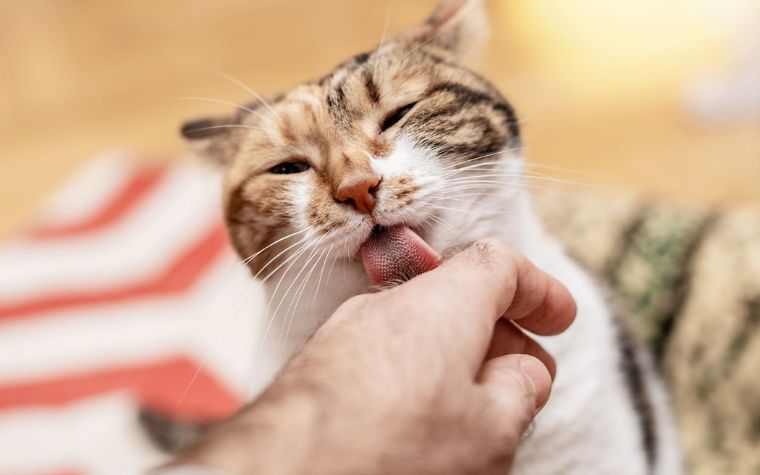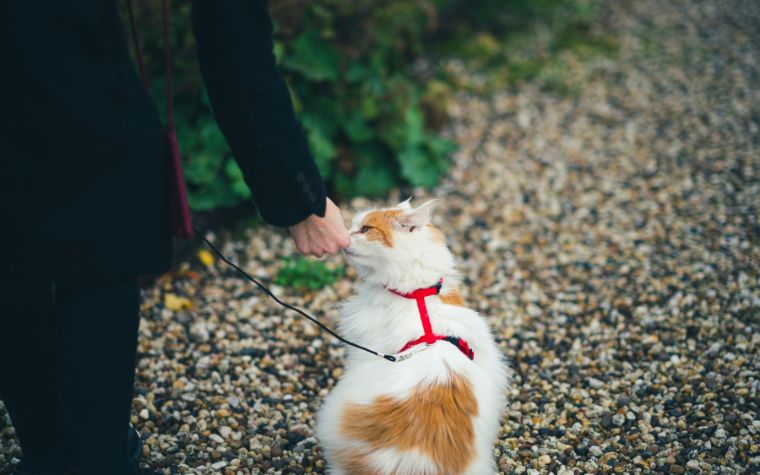Cat training is often overlooked by pet owners, with many believing that cats are too independent to be trained. However, training your cat is not only possible but also beneficial for both you and your feline friend. Here’s why:
1. Strengthening the Bond Between You and Your Cat
Training sessions are an excellent way to spend quality time with your cat. The positive reinforcement used during training helps build trust and strengthens the bond between you and your pet. This mutual understanding can lead to a more harmonious relationship.
2. Improving Your Cat’s Behavior
Cat Training can help correct undesirable behaviors like scratching furniture, excessive meowing, or aggression. With proper training, your cat will learn what behaviors are acceptable and which are not, making your home a more peaceful place.
3. Enhancing Your Cat’s Mental Stimulation
Cats are intelligent animals that need mental stimulation to stay happy and healthy. Cat Training sessions provide a fun and engaging way to challenge your cat’s mind, preventing boredom and reducing the likelihood of behavioral issues.
4. Ensuring Your Cat’s Safety
Training can also be a matter of safety. Teaching your cat to respond to commands like “come” or “stay” can be crucial in preventing them from getting into dangerous situations, such as running out the door or into a busy street.
5. Making Vet Visits Easier
A well-trained cat is easier to handle during vet visits or grooming sessions. If your cat is accustomed to being touched, held, and examined, these experiences will be less stressful for both of you.
Also Read:- Top 10 Cutest Cat Breeds You’ll Want to Adopt
Before You Start Training Your Cat

Before diving into training, there are a few important considerations to keep in mind to ensure the process is as smooth and successful as possible.
1. Understand Your Cat’s Personality
Every cat is unique, with its own personality and preferences. Some cats are more curious and eager to learn, while others might be more reserved. Understanding your cat’s personality will help you tailor your training methods to suit their individual needs.
2. Be Patient and Consistent
Training a cat requires patience and consistency. Unlike dogs, cats may take longer to learn new behaviors. It’s important to remain calm and consistent, repeating the same commands and rewarding the desired behaviors every time.
3. Start with Simple Commands
Begin with simple commands that are easy for your cat to understand. Commands like “sit,” “come,” and “stay” are great starting points. Once your cat masters these, you can move on to more complex behaviors.
4. Choose the Right Time for Training
Cats are more receptive to training when they are calm and focused. Choose a time when your cat is neither too hungry nor too full, and when they are in a relaxed state. Avoid training sessions when your cat is anxious or overly excited.
5. Use Positive Reinforcement
Positive reinforcement is the most effective training method for cats. Reward your cat with treats, praise, or playtime whenever they perform the desired behavior. This helps them associate the behavior with positive outcomes, making them more likely to repeat it.
Also Read:- Is Your Cat Suffering from Dental Disease? Signs, Causes & Prevention
Get the Necessary Cat Training Tools

To ensure successful training sessions, it’s important to have the right tools on hand. Here are some essential items to consider:
1. Treats and Rewards
Treats are a powerful motivator for cats during training. Choose small, soft treats that your cat loves. You can also use pieces of their regular food if they are particularly fond of it. The key is to use something your cat finds irresistible.
2. Clicker
A clicker is a small device that makes a clicking sound when pressed. It’s used to mark the exact moment your cat performs the desired behavior. The clicker sound is followed by a treat, helping your cat associate the sound with a reward. Over time, your cat will learn to understand that the click means they’ve done something right.
3. Cat Toys
Toys can be used as both a reward and a training tool. Interactive toys, such as wand toys or laser pointers, can be particularly useful for training. They can help redirect your cat’s attention and energy towards the desired behavior.
4. Litter Box and Scratching Post
Part of training involves teaching your cat to use the litter box and scratching post properly. Ensure that these items are easily accessible and placed in appropriate locations. A clean litter box and a sturdy scratching post can prevent many common behavioral issues.
5. Harness and Leash
If you plan to train your cat to go for walks, a harness and leash are essential. Choose a comfortable, well-fitting harness that your cat can’t easily slip out of. Start by letting your cat wear the harness indoors before gradually introducing the leash.
6. Patience and Persistence
While not a physical tool, your attitude during training is crucial. Patience and persistence will help you stay calm and focused, which in turn will make your cat more relaxed and receptive to learning.
Also Read:- 5 Nutritious Homemade Cat Food Recipes
Cat Training Tips

Training a cat requires a blend of understanding, patience, and a few tried-and-true techniques. Here are some tips to help you get started:
1. Keep Training Sessions Short
Cats have short attention spans, so it’s best to keep training sessions brief. Aim for 5-10 minutes per session, and try to have multiple sessions throughout the day. This will prevent your cat from becoming bored or frustrated.
2. Use a Clicker
As mentioned earlier, a clicker can be a very effective training tool. The clicking sound helps your cat quickly identify which behavior is being rewarded. Be sure to follow each click with a treat to reinforce the connection.
3. Be Consistent with Commands
Use the same command word for each behavior you’re trying to teach. For example, if you’re training your cat to sit, always use the word “sit” and avoid using variations like “sit down” or “stay seated.” Consistency helps your cat learn more quickly.
4. Reward Immediately
Timing is everything in cat training. Make sure to reward your cat immediately after they perform the desired behavior. This helps them make a clear connection between the behavior and the reward.
5. Avoid Overfeeding During Training
While treats are a great motivator, be mindful of how many you’re giving your cat during training sessions. Overfeeding can lead to weight gain and other health issues. You can use smaller treats or reduce your cat’s regular food portions to balance their diet.
6. End on a Positive Note
Always end training sessions on a positive note. If your cat successfully performs a behavior, give them a reward and plenty of praise before wrapping up the session. This leaves them with a positive association with training and makes them more eager to participate in the future.
Don’t Punish the Bad Behavior

Punishment is not an effective training method for cats and can lead to fear, anxiety, and even aggression. Instead of punishing bad behavior, focus on reinforcing good behavior. Here’s why:
1. Cats Don’t Respond Well to Punishment
Unlike dogs, cats do not respond well to punishment. Yelling, scolding, or using physical punishment can damage your relationship with your cat and make them fearful of you. This fear can lead to further behavioral problems, making training even more difficult.
2. Redirect Negative Behavior
If your cat is engaging in undesirable behavior, such as scratching furniture, try redirecting their attention to a more appropriate activity. For example, if your cat is scratching the couch, gently move them to their scratching post and reward them when they use it.
3. Create a Positive Environment
Creating a positive environment can help reduce the likelihood of bad behavior. Make sure your cat has plenty of toys, scratching posts, and places to climb. A stimulating environment will keep your cat occupied and reduce the chances of them engaging in destructive behaviors.
4. Understand the Root Cause
Sometimes, bad behavior is a sign of an underlying issue, such as stress, boredom, or a health problem. If your cat suddenly starts displaying undesirable behavior, it’s important to consider whether something might be wrong. A visit to the vet may be necessary to rule out any medical issues.
5. Be Patient
Patience is key when dealing with bad behavior. Remember that training is a process, and it may take time for your cat to learn new habits. Stay calm, consistent, and positive, and your efforts will eventually pay off.
Also Read:- Mysterious Facts About The Chausie Cat Breed
Important Notes for Successful Cat Training

Training your cat can be a rewarding experience, but it requires time, effort, and understanding. Here are some important notes to keep in mind as you embark on this journey:
1. Start Early
The earlier you start training your cat, the better. Kittens are more adaptable and easier to train than older cats. However, adult cats can also be trained with patience and persistence.
2. Understand Your Cat’s Limits
Every cat has its own limits and tolerance levels. Pay attention to your cat’s body language and behavior during training sessions. If they seem stressed or uninterested, it’s best to end the session and try again later.
3. Be Gentle
Always use gentle methods when training your cat. Avoid physical force or harsh tones, as these can create fear and anxiety. Positive reinforcement and patience are the keys to successful training.
4. Celebrate Small Wins
Training takes time, so celebrate the small victories along the way. Each step your cat takes towards learning a new behavior is an achievement. Recognizing and rewarding these small wins will keep both you and your cat motivated.
5. Consult a Professional if Needed
If you’re struggling with training or if your cat has particularly challenging behaviors, don’t hesitate to consult a professional. A certified cat behaviorist or trainer can provide personalized guidance and support.
6. Keep Training Fun
Training should be a fun and enjoyable experience for both you and your cat. Incorporate playtime and treats into your sessions to keep things light and engaging. The more fun your cat has, the more willing they’ll be to participate.
7. Respect Your Cat’s Independence
While training is important, it’s also essential to respect your cat’s natural independence. Cats are not as eager to please as dogs, so forcing them into situations they’re uncomfortable with can be counterproductive. Allow your cat to learn at their own pace.
Also Read:- Facts About the British Longhair: A Domestic Cat Breed
Conclusion of Cat Training Guide

Training your cat is not only possible but also highly beneficial. It strengthens your bond, improves behavior, and ensures your cat’s safety. By understanding your cat’s personality, using positive reinforcement, and being patient and consistent, you can successfully train your feline friend. Remember to avoid punishment, keep training sessions short and fun, and celebrate each small victory along the way.
With the right approach and tools, cat training can be a rewarding experience for both you and your pet. Your efforts will lead to a happier, healthier, and more well-behaved cat, making your home a more peaceful and enjoyable place.
